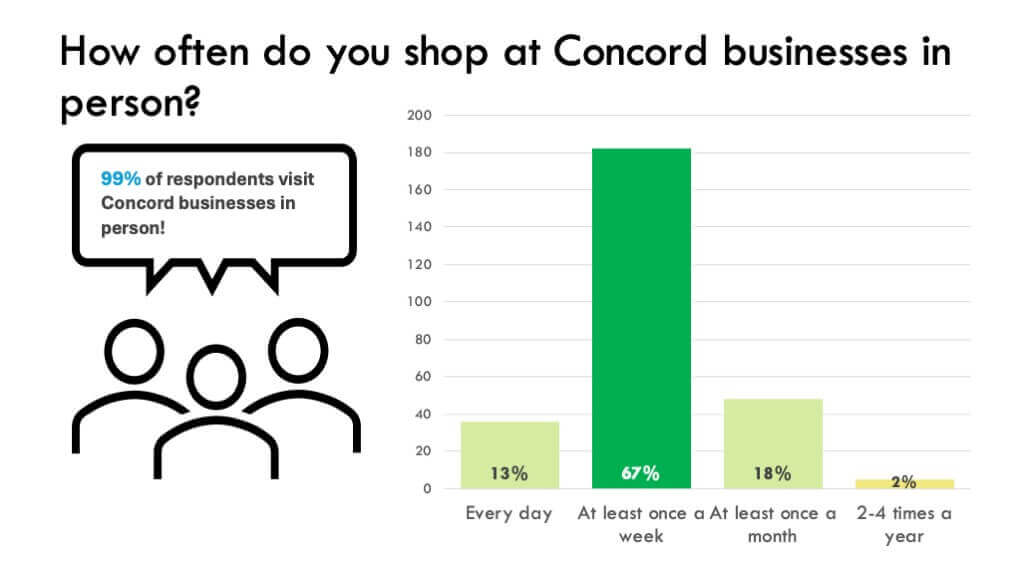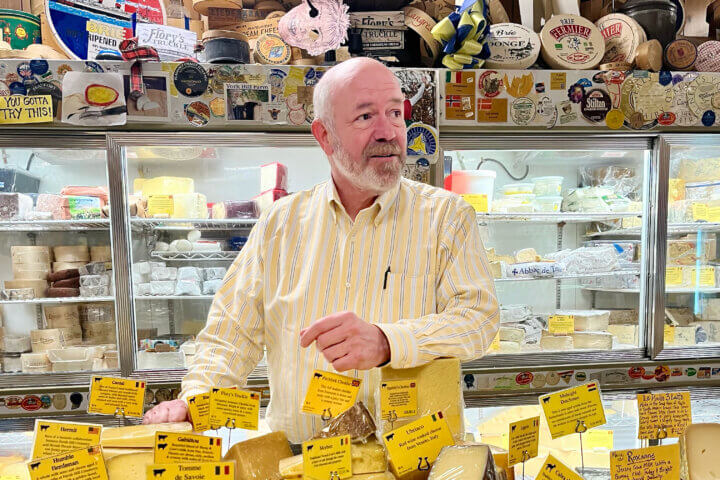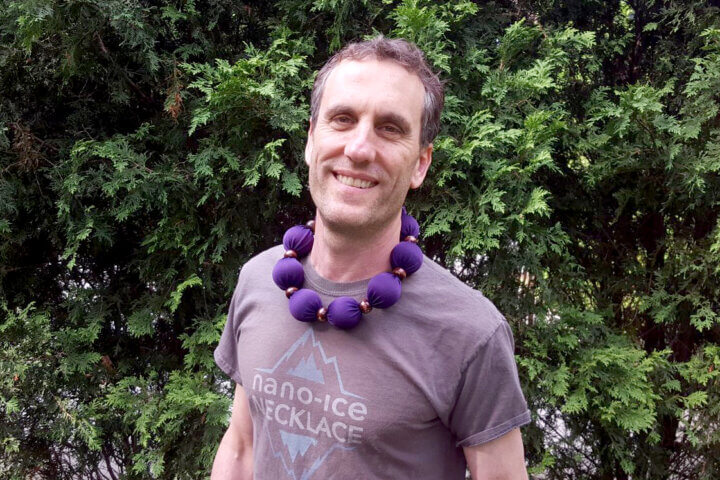By Holly Camero — Correspondent
When Nancy Allam shops for “fun stuff,” she likes to be able to “reach out [and] touch it.”
But, at 75 ½, and getting around with a cane, Allam says getting out and about in Concord’s business districts can be challenging.

Janet Beyer is in her 90s, and while she’s quick to say she’s not feeble, she needs a walker and, on occasion, a wheelchair to get around.
She rarely shops in person anymore, although she does enjoy dining out in Concord.
Both women recently shared their opinions in an aging survey created by Economic Vitality Manager Mimi Graney in partnership with the Metropolitan Area Planning Council.
The verdict: Getting to, into, and around local shops could be easier for older customers.
Doing the math
The survey asked seniors to rank Concord businesses based on age-friendly practices, including accessible parking, good customer service, easy-to-find entrances, aisles that are easy to navigate, and seating.
Nearly all — 99% — of the 263 respondents said they shop in person in Concord; those 79 and younger visit Concord businesses at least once a week.
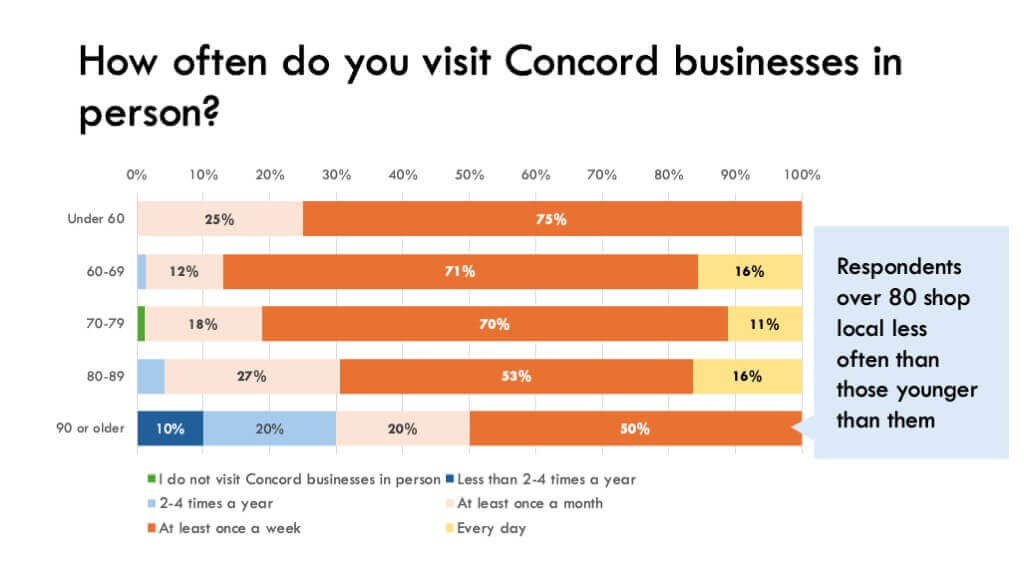
Graney said that with roughly 20% — about 6,000 people — of Concord’s population over 60 and that percentage rising, age-friendly practices are good for both older Concordians and the local economy, making the local shopping scene “more inclusive of everybody,” she said.
Room for change
Survey results showed seniors want more seating, more accessible parking spaces, better sidewalks, signal lights at crosswalks, more public restrooms, and ramps at intersections.
They would also like discount days, special shopping hours, quiet areas, themed programming for older adults, and home delivery options.
Beyer said accessible parking spots often don’t line up with curb cuts.
“I would love to be able to get out of my car and have a curb cut there. It’s difficult to get up the curb. Getting down is scary,” she said.
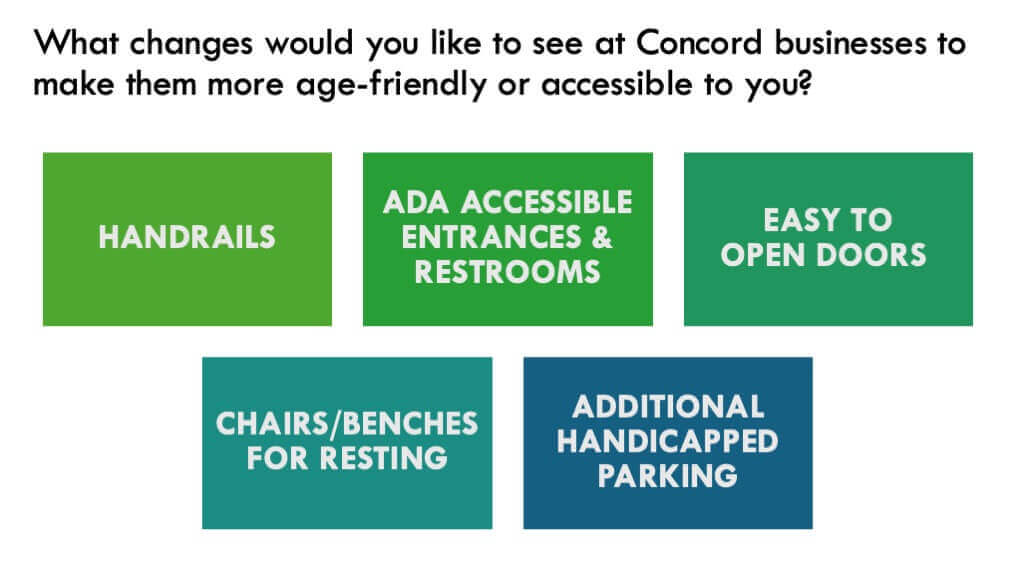
Allam has trouble walking but does not have an accessible parking sticker, so finding a spot close to a business is important — and, she said, often difficult.
Steps in front of many local shops and restaurants present another challenge.
“There are older properties that are historically challenging. It’s almost impossible to make them fully ADA accessible,” said Graney.
Restaurants with accessible doors often keep them locked, Beyer said, forcing her to rely on a family member or a stranger to open the door or alert a staff member.
(Some) friendly faces
Most respondents gave kudos to employees for kindness, but Allam said some places are not so friendly to seniors.
“The older you get, the more invisible we seem to get. Sometimes when folks go out, the checkout person might be the only people they are chatting with that day,” she said, “so I think it’s particularly important to be very friendly.”
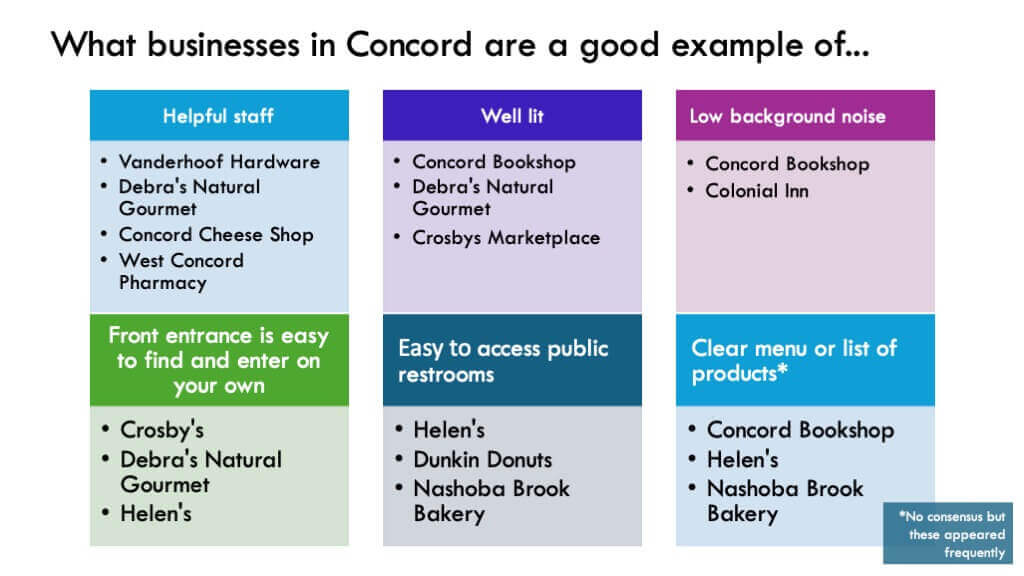
Beyer, on the other hand, has found staff willing to help, often bringing merchandise to her car.
“I find the shopkeepers to be very accommodating,” she said.
Overall, respondents gave businesses high marks for being age-friendly.
One step at a time
Graney said she will recruit three or four ambassadors who’ll be trained in the specific design elements of an age-friendly business.
During the summer, they will “go on the road” to identify age-friendly businesses and highlight them on a map and in a little directory. They will also create a slideshow with pictures and best practices as a resource for local business owners.
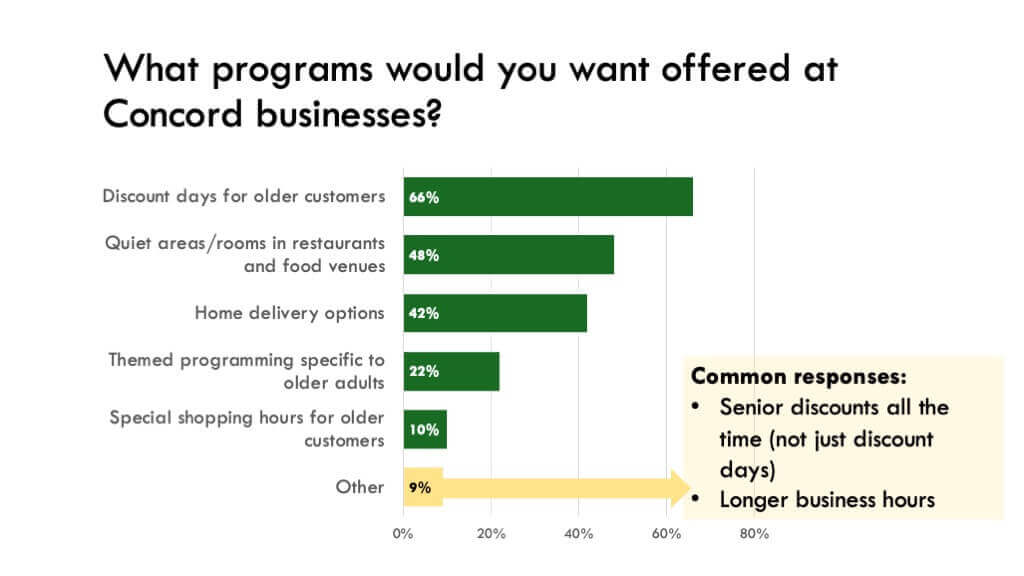
“Businesses are doing a great job… but there is always room for improvement. We can help them identify other things they can do,” Graney said.
Small changes can make a big difference: making house calls, bringing goods straight to the car or installing handrails, “which does make a positive difference,” she added.
“Some businesses are doing wonderful creative things … [and] are meeting the challenges,” said Graney.


